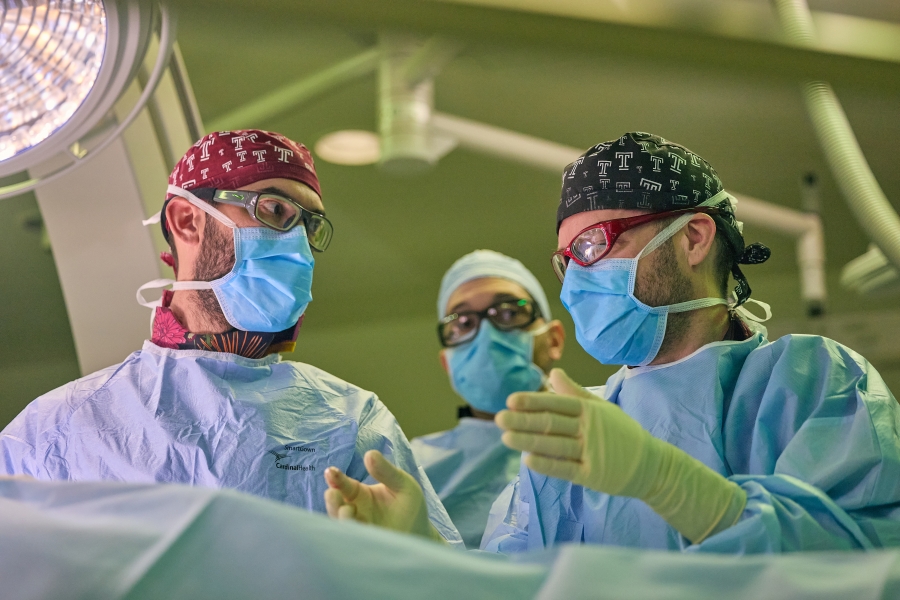Pacemakers and implantable cardioverter defibrillators (ICDs) are two of the most common electrical heart devices. Although millions of people have had these devices implanted, there are still many myths and questions surrounding them. Here are answers to some of the most common questions and concerns:
Frequently Asked Questions About Implantable Heart Devices
Pacemakers help keep the heart from going too slow, and sometimes are needed to keep the top and bottom halves of the heart well-coordinated. They do this by sending small electrical pulses to the heart when the heart’s normal electrical system is not working properly.
Implantable cardioverter defibrillators (ICDs) usually have a double-function: they can act just like a pacemaker to treat a slow heartbeat. But their main purpose is to correct life-threatening abnormal fast heartbeats by either sending rapid-fire electrical signals to the heart or delivering an electrical “shock” to the heart when needed.
Defibrillators can save a person’s life by quickly stopping a “runaway” fast heartbeat, allowing the heart to switch back to its proper pace and rhythm.
Pacemakers and defibrillators don’t cure heart rhythm conditions, meaning they don’t permanently eliminate the problem. Pacemakers basically act as a new substitute electrical system for the heart, when the heart’s natural electrical system isn’t working well.
Defibrillators, on the other hand, are more like having an “insurance policy” when there is a heart condition that creates risk for future life-threatening heart rhythms. The defibrillator simply watches the heart 24/7, ready to spring into action if a dangerous fast heart rhythm ever occurs, requiring a life-saving shock.
Most people never feel a pacemaker working because it uses very small electrical pulses that cannot be felt.
Defibrillators use a stronger shock that can briefly be very painful if the person is awake and hasn’t fully fainted from the abnormal heartbeat. However, a defibrillator shock usually only happens once to treat the problem, and it often just saved that person’s life!
Pacemakers and defibrillators are typically implanted through very small incisions (usually 1-3 inches long) while patients are partially sedated. These are not open heart surgical procedures. Most patients will be sore for a few days after implantation but usually can return to normal activities quickly.
Today’s devices are smaller than ever and can often be implanted through small incisions that leave a thin scar line. Good cosmetic results can also be achieved by ‘hiding’ these devices in certain places, such as behind a muscle.
Not all abnormal heartbeats have obvious symptoms, and some heart conditions have a risk for future dangerous heart rhythms that haven’t even happened yet. That means a person could be at risk for a future life-threatening emergency and not have any symptoms or even know about it.
In many cases, a heart problem is picked up by a routine test, like an EKG or a heart ultrasound (echocardiogram). If an abnormality is discovered on a heart test, it’s usually recommended that patients not wait until symptoms occur or something goes wrong. Instead, investigate and treat preventatively to try to avoid or minimize future problems.
In some situations, implanting a device proactively before symptoms occur is the best way to reduce future risks.
People with heart devices have no travel restrictions. It’s true that pacemakers and defibrillators may be picked up by a metal detector or scanner, but walking through detectors won’t damage the devices or cause them to malfunction.
Most people simply carry a wallet card that they can present to security informing them of the device, and allowing them to use a quick pat-down screening process instead of the metal detector.
Most people can still drive with a pacemaker or defibrillator, as long as they haven’t been having any fainting spells. Sometimes doctors will restrict driving for a week or so after implantation while the device heals, largely because of the prescription pain medication the patient is taking.
And it’s true that people with these devices cannot hold a commercial driver’s license. But in all other cases, studies show that people who have a pacemaker or defibrillator are at no greater risk of having an accident than the general public.
The batteries in today’s heart devices commonly last up to 10 years or longer. This greatly reduces the need for device replacement for a low battery. Also, changing the settings on a device can be done in the office through a wireless link, meaning there is no need for an incision or procedure of any kind.
The myth of not being able to go near microwave ovens if you have a heart device was actually true decades ago!
But today, thanks to advances in technology, it’s perfectly safe to be around microwaves if you have a heart device.
Ready for an Appointment?
To schedule an appointment with an arrhythmia specialist, request an appointment online or call 800-TEMPLE-MED.

